Your cart is currently empty!
Iran: The Land of Culture, Art, and Heritage
Iran, a vast and ancient land, is not only home to breathtaking historical landmarks but also a melting pot of diverse nationalities and ethnic groups. Every city, village, and region is deeply connected to its rich cultural roots, artistic traditions, and age-old customs.
This deep heritage is reflected in Iran’s incredible variety of handicrafts—each piece serving as a window into the history, craftsmanship, and soul of its people. These traditional arts have been passed down through generations of artisans, preserving the essence of Iranian identity.
It is impossible to capture the full beauty, effort, and passion behind these handicrafts in a single article. However, this documentary aims to take you on a journey through 12 of the most captivating Iranian handicrafts, showcasing the artistry, dedication, and love woven into each masterpiece.
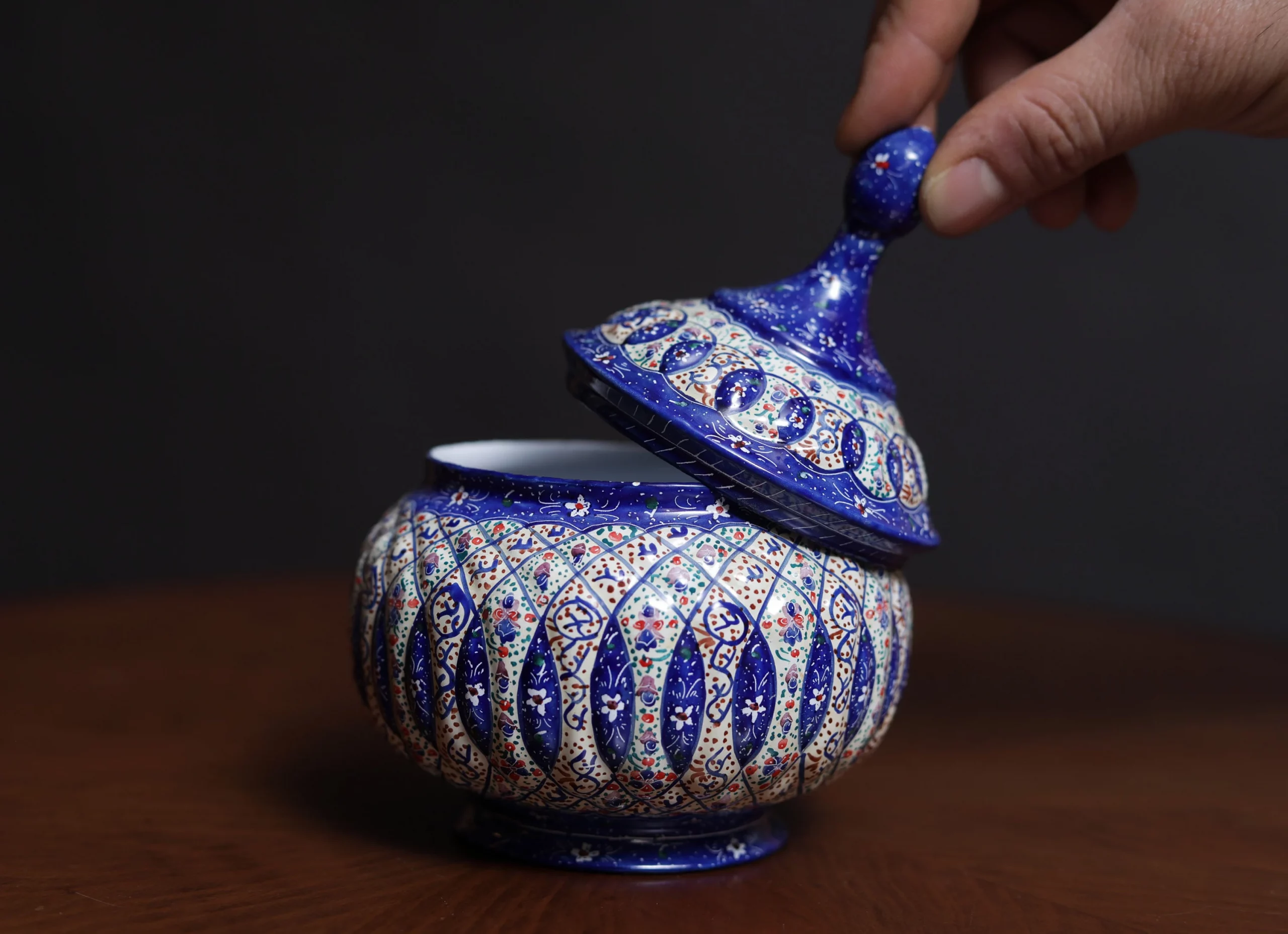

Handicrafts: A Cultural Legacy and Artistic Expression
Handicrafts are an integral part of a nation’s cultural identity, carrying profound historical significance. These handmade creations serve as living reflections of tradition, craftsmanship, and the artistry of a region, passed down through generations.
Iran stands among the leading nations in handicraft production, renowned for its diverse range of traditional crafts, each representing centuries of skill and artistic mastery. Some of the most celebrated Iranian handicrafts include:
By exploring the handicrafts of a city or country, one can gain valuable insights into the way of life of past societies, understanding their artistic expressions, customs, and practical innovations.
In today’s world, handicrafts continue to captivate people globally, not only for their aesthetic and artistic appeal but also for their cultural and historical value. For many, purchasing handicrafts is a meaningful way to connect with heritage, making them a preferred choice for souvenirs while traveling. Recognizing the importance of this artistic heritage, June 10th has been designated as World Handicrafts Day, a tribute to the artisans who keep these traditions alive.
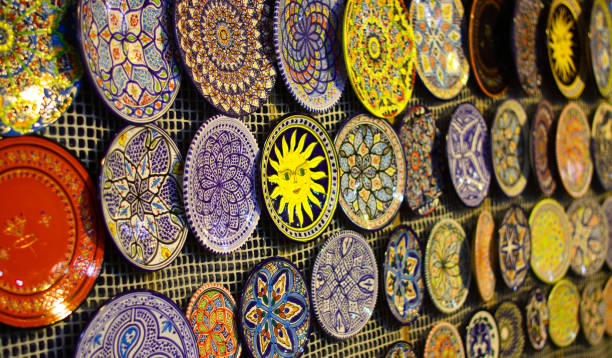
Hasirbafi (Traditional Wickerwork & Basket Weaving) – Handwoven items crafted from reeds and palm leaves, showcasing precision and durability.
Termeh Fabric – A luxurious Persian textile, intricately woven with fine silk and wool, known for its ornate patterns.
Copperware (Mesgari) – Beautifully handcrafted copper utensils, plates, and decorative items, preserving Iran’s metalworking heritage.
Mina Kari (Enamel Work) – A delicate art form involving vibrant enamel designs on metal and ceramic surfaces.
Handwoven Persian Carpets and Rugs – Exquisite, meticulously woven rugs that have defined Persian craftsmanship for centuries.
Traditional Iranian Embroidery (Roudouzi-ye Sonnati) – Detailed, hand-stitched textile art, often featuring floral and geometric motifs.
Pottery and Ceramics – A tradition spanning thousands of years, with stunning hand-shaped and painted clay works.
Glassware & Persian Glassblowing (Abgineh) – Masterfully blown and crafted glass objects, celebrated for their clarity and elegance.
Woodcraft & Persian Wooden Handicrafts – From Khatamkari (Persian marquetry) to Moaragh (wood inlay work), Iranian woodworking is a testament to fine craftsmanship.
Persian Miniature Painting (Negargari) – A highly detailed, artistic expression rooted in Persian storytelling and history.
Felt Making (Namad Mali) – A centuries-old technique of molding wool fibers into thick, durable textiles used in clothing and home decor.
Leather Handicrafts – Exquisitely handcrafted leather goods, showcasing the mastery of Iranian tanners and artisans.
Music instruments
Each of these crafts embodies the artistic soul of Iran, bridging the past and present through handmade excellence. Iran’s rich and diverse handicraft traditions not only preserve the artistic heritage of its people but also serve as a cultural bridge connecting generations through craftsmanship and innovation.
1- Hasirbafi: The Art of Iranian Wickerwork
The first Iranian handicraft we explore today is Hasirbafi (traditional wicker weaving). In modern times, Hasirbafi is primarily used for home décor in Iran. This craft, one of the oldest handicrafts in the world, is created by interweaving plant fibers to form woven mats and decorative pieces.
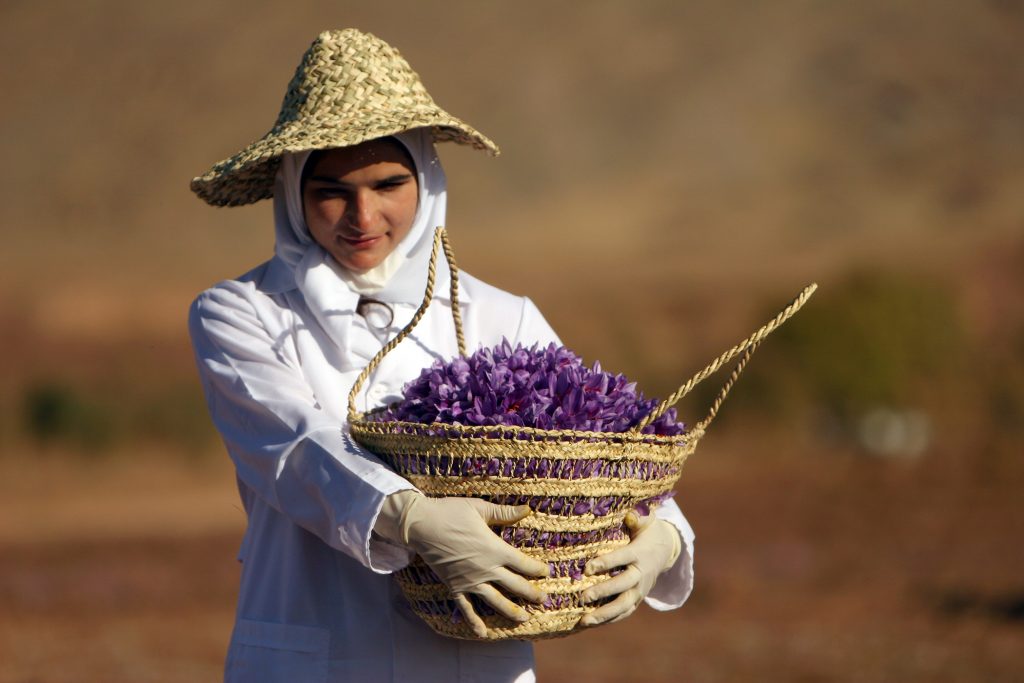
Historical evidence, including limited artifacts discovered in Africa and Mesopotamia, suggests that ancient civilizations wove marsh plants together to craft mats, a technique that evolved into today’s Hasirbafi. Currently, 16 countries recognize wicker weaving as part of their historical industries, with Japan, Korea, and Mexico being among the most well-known.
Despite its ancient roots, Hasirbafi remains one of Iran’s most popular handicrafts. Woven items come in a variety of shapes and sizes, depending on regional craftsmanship. The raw materials used for Hasirbafi vary between cities and countries, as artisans select plant fibers best suited to their local climate.
The weaving techniques also differ based on geographical and environmental factors, yet all Hasirbafi products share a fundamental structure—being woven from interlaced fibers to create durable and artistic designs.
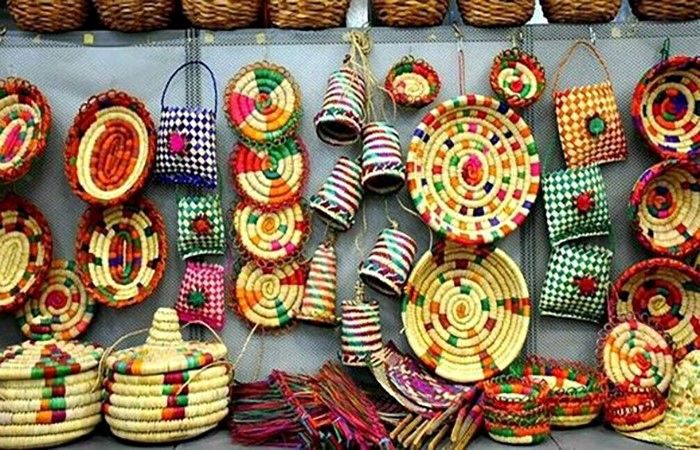
Where is Hasirbafi Produced in Iran?
As mentioned earlier, Hasirbafi remains one of the most widely practiced and beloved handicrafts in Iran. While wicker weaving can be found across almost every city, some provinces are particularly known for their high-quality craftsmanship in this field. The leading regions in Hasirbafi production include:
- Sistan and Baluchestan
- Kurdistan
- Khuzestan
- Bushehr
- Khorasan
- Hormozgan
- Kerman
- Yazd
- Fars
- Mazandaran
- Gilan
- East Azerbaijan
- Tehran
Regional Variations in Hasirbafi
- Northern Iran (Mazandaran & Gilan):
If you have ever traveled to northern Iran, you’ve likely encountered Hasirbafi products from Gilan or Mazandaran. In this region, wicker weaving is mostly done using mechanized looms, and the finished products are commonly used as floor mats (Zirandaz). - Desert Regions (Biabanak & Na’in):
In desert areas such as Biabanak and Na’in, palm tree leaves are primarily used for weaving. In contrast, in other cities like Najafabad, artisans use soft willow twigs from one- or two-year-old trees to craft their products. A unique type of basket woven in this area is called “Ludeh.” - Qasr-e Shirin (Kermanshah Province):
In Qasr-e Shirin, young palm tree branches are used for weaving, and the final product is locally referred to as “Fasil.” - Sistan and Baluchestan (Authentic Weaving Tradition):
The Hasirbafi industry in Sistan and Baluchestan is of great significance due to the region’s unique climate and the affordability of raw materials. Locally, Hasirbafi is known as “Asil Bafi”, a name derived from “Asil,” a type of reed stem commonly used in the craft. Another material frequently used in this region is “Tagard,” a specific type of wood suitable for weaving.
Each of these regions showcases distinct techniques and materials, demonstrating Iran’s rich diversity in wicker weaving traditions.

Which Iranian City Produces the Best Hasirbafi?
Hasirbafi is a widespread and thriving craft across many cities in Iran, with each region producing unique variations tailored to local materials and traditions. Due to this diversity, no single city can be named as the absolute best, as each location has distinct strengths in wicker weaving.
However, some cities are particularly renowned for their exceptional Hasirbafi craftsmanship, including:
- Khuzestan – Known for its abundance of palm trees, which provide high-quality raw materials for weaving.
- Northern Cities (Especially Gilan & Mazandaran) – Famous for their rich reed beds, which allow artisans to craft fine, intricate mats and baskets.
- Sistan and Baluchestan – Highly regarded for its hot climate, availability of raw materials, and affordability, making Hasirbafi an economically significant craft in the region.
Each of these cities contributes uniquely to Iran’s Hasirbafi industry, ensuring the continuation of this centuries-old tradition.
2- Termeh Fabric: The Exquisite Persian Textile
The second Iranian handicraft, known for its exceptional beauty and luxurious craftsmanship, is Termeh fabric. This highly valuable and mesmerizing textile has long been a symbol of Iranian artistic heritage.
Termeh is a fine Persian fabric, instantly recognizable by its iconic “Boteh-Jegheh” (Paisley) motifs. This elegant textile is woven from delicate fibers, traditionally made of wool, cashmere, or silk, giving it a soft, refined texture.
What makes Termeh truly unique is its dense and intricate weaving technique. The back of the fabric consists of loosely interwoven weft threads, creating a high-density texture, while the surface appears smooth and uniform, enhancing its luxurious appeal.
Produced in a variety of colors, patterns, and intricate designs, Termeh is not just a fabric—it is a masterpiece, embodying centuries of Persian artistry and craftsmanship.
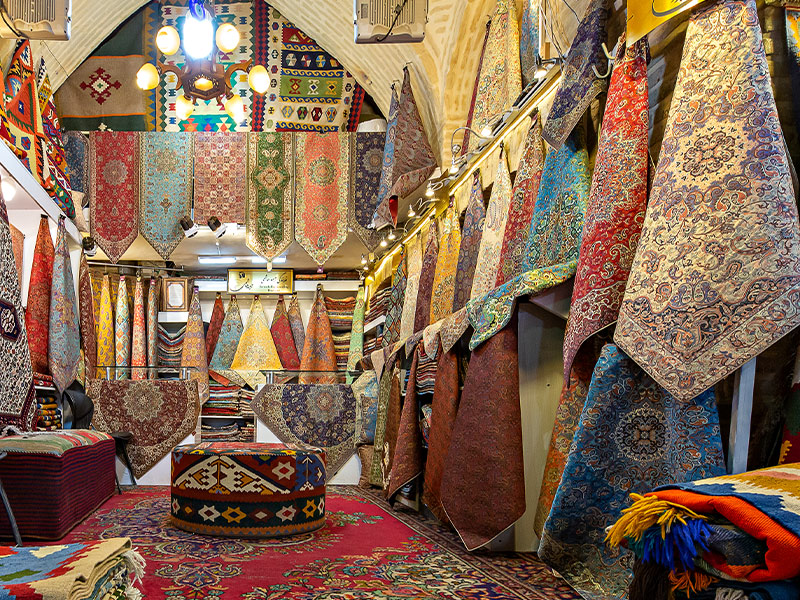
Where is Termeh Fabric Produced in Iran?
Termeh is produced in several cities across Iran, but its true origin and highest quality production are found in Yazd. This city has been the historical center of Termeh weaving, renowned for its exceptional craftsmanship and fine textiles.
Historically, Yazd’s strategic location along the Silk Road made it a major hub for the trade of textiles and fabrics. Some historical sources, however, trace the origins of Termeh weaving to Kerman, another city known for its long-standing textile industry.
Unfortunately, Termeh weaving is a fading art, with production now limited to only a few cities, including:
Yazd – The main hub for high-quality Termeh weaving.
Kerman – Historically known for producing Termeh.
Kashan – A city famous for its textile heritage.
Tehran – Limited production still exists in the capital.
Types of Termeh Fabric
Termeh is a delicate and artistic textile, featuring intricate patterns and luxurious designs. This handcrafted fabric is available in various styles, each with distinct patterns and traditional significance:
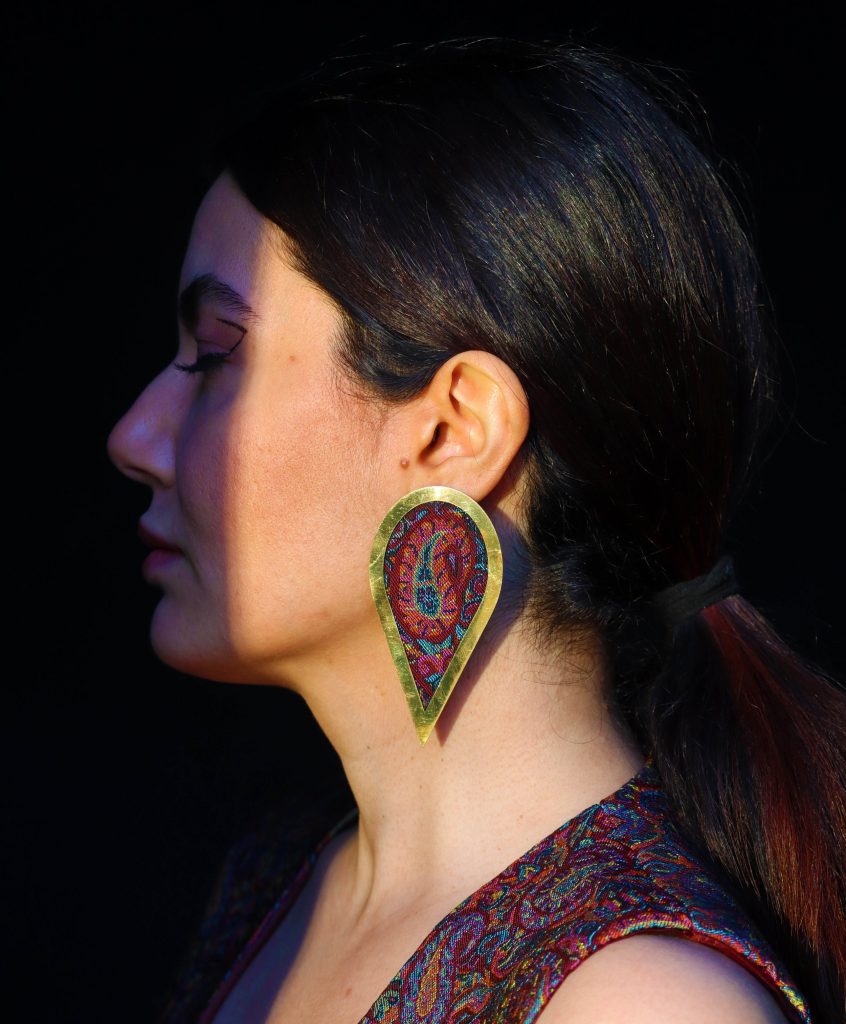
Shal-e Charghadi – A traditional headscarf-style Termeh.
Shal-e Rah-Rah – A striped-pattern Termeh.
Shal-e Kashmiri – A fine, high-quality wool Termeh.
Shal-e Atabaki – A noble-style Termeh associated with Persian royalty.
Shal-e Bandi – A knotted pattern Termeh.
Shal-e Moharramat – A Termeh featuring lined patterns used in special ceremonies.
Shal-e Zamorodi – A richly colored emerald-green Termeh.
Shal-e Kermani – A unique Termeh style from Kerman.
Shal-e Amiri – A royal-inspired Termeh fabric.
Shal-e Yazdi – The classic Yazd-style Termeh.
Shal-e Kamarbandi – A belt-style Termeh used in traditional Persian dress.
Each type of Termeh showcases Iran’s rich textile heritage, preserving an ancient tradition of elegance and artistry.
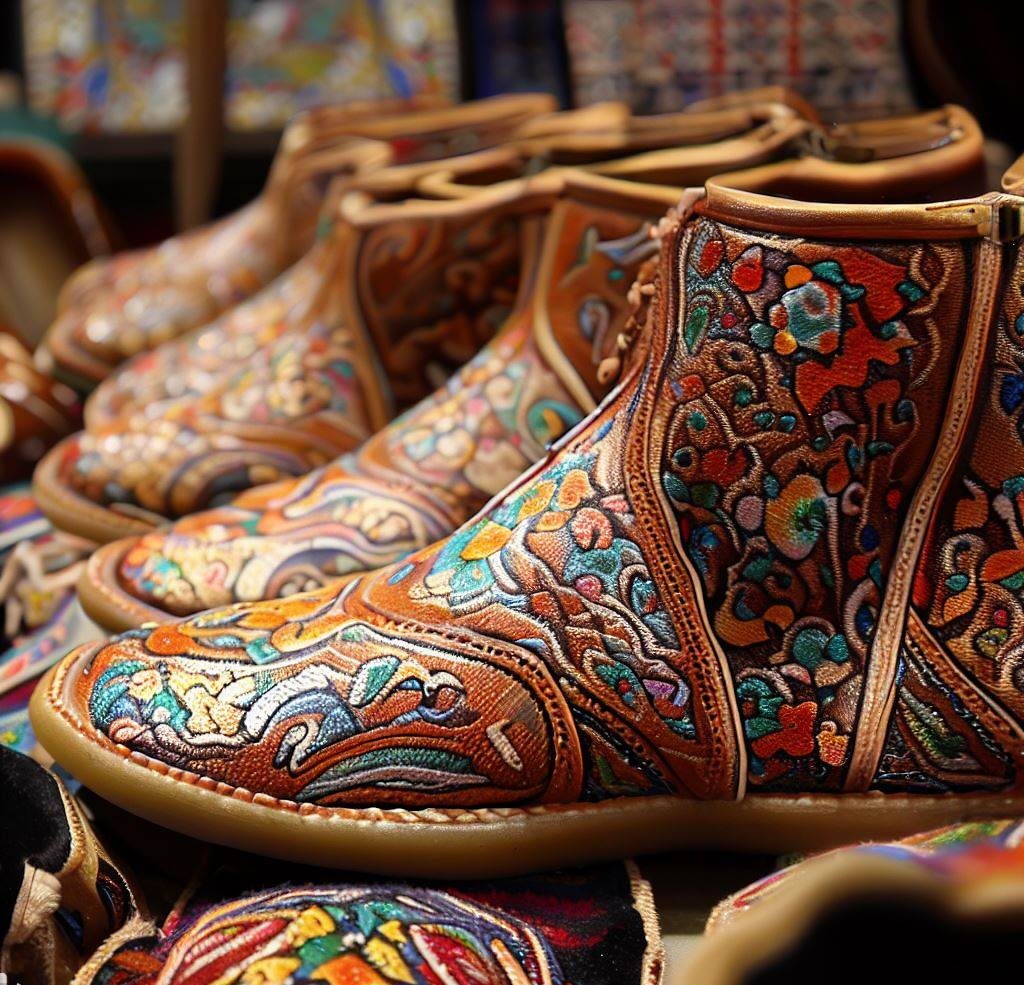
3- Mesgari (Copperware)
The first metal ever discovered and utilized by humans was copper. Historical evidence suggests that ancient civilizations extensively used copper for various purposes. Early humans learned to melt and shape copper, crafting essential tools like knives and weapons. Over time, as the use of copper expanded, it was also employed in the creation of decorative objects, such as pendants and ornaments.

Copper utensils and cookware are among the oldest and most durable kitchenware known to humanity. These items are highly valued for their:
Longevity – Copperware lasts for generations.
Heat Resistance – Copper effectively withstands high temperatures.
Aesthetic Appeal – The radiant reddish-gold hue of copper makes it visually striking.
Today, copperware remains one of the most common and cherished Iranian handicrafts, continuing a thousands-year-old tradition of Persian metalwork.
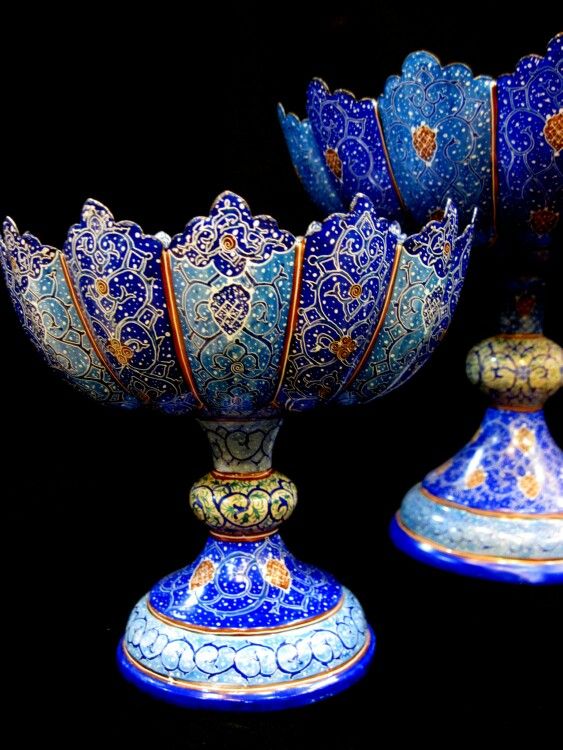
Where is the Best Copperware Produced in Iran?
The history of copper usage dates back to 9,500 BCE, and in Iran, Zanjan province has long been recognized as a hub of copper craftsmanship.
Although modern materials like plastic and aluminum temporarily replaced copperware in Iranian households, the demand for authentic copper products has surged in recent years. Many consumers now appreciate copper’s durability and health benefits, leading to a revival of copper cookware and decorative items in the market.
The most famous Iranian cities for high-quality copperware production include:
Zanjan – The most active and historic center of Iranian copper craftsmanship.
Tehran – A major production hub with a growing market for copper utensils.
Isfahan – Known for its exquisite, hand-engraved copperware used in Persian households and traditional ceremonies.
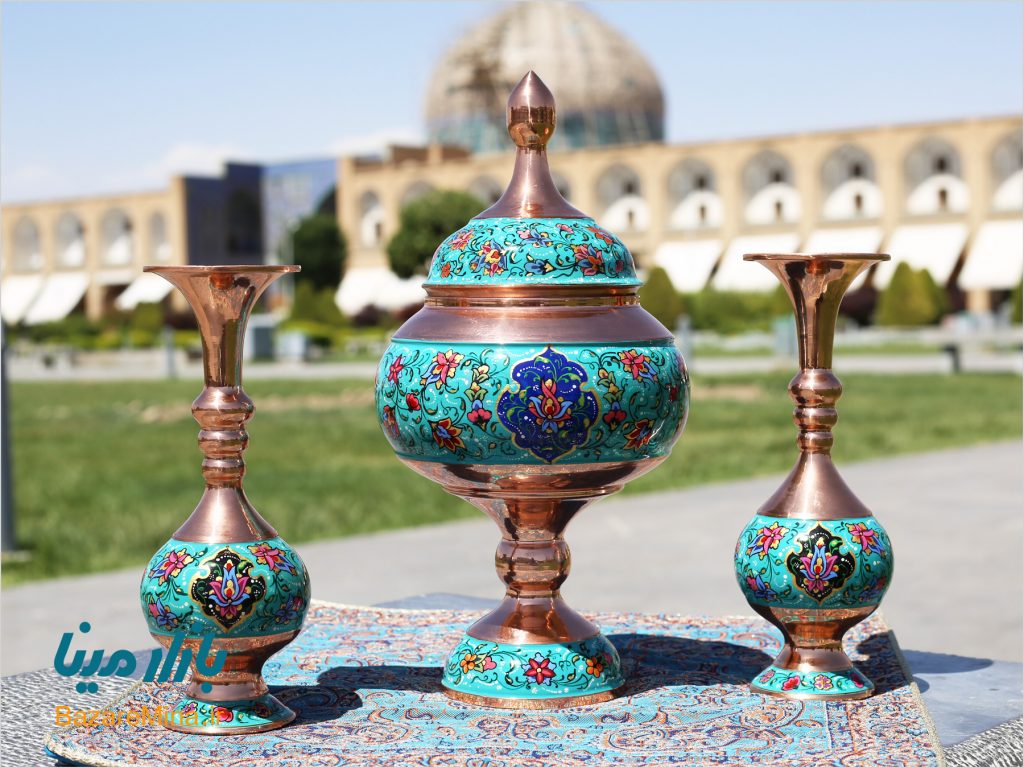
From functional kitchenware to intricate decorative pieces, Iranian copperware remains an iconic symbol of Persian metal artistry, blending beauty, practicality, and centuries-old tradition.
What Is the Difference Between Zanjan and Isfahan Copperware?
Both Zanjan and Isfahan are among the oldest producers of high-quality copperware in Iran. However, there are some key differences between their copper products that are worth noting:
- Zanjan copperware offers a much wider variety compared to Isfahan.
- Isfahani coppersmiths specialize in decorative techniques such as Ghalamkari (engraving), Khatam (marquetry), and Firouzeh-Koubi (turquoise inlay work), which are rarely produced in Zanjan.
- Zanjan is known for producing high-quality copper cookware, preferred for cooking and daily use.
- Isfahan’s copper production is more focused on decorative pieces, making it a hub for artistic and ornamental copperware.
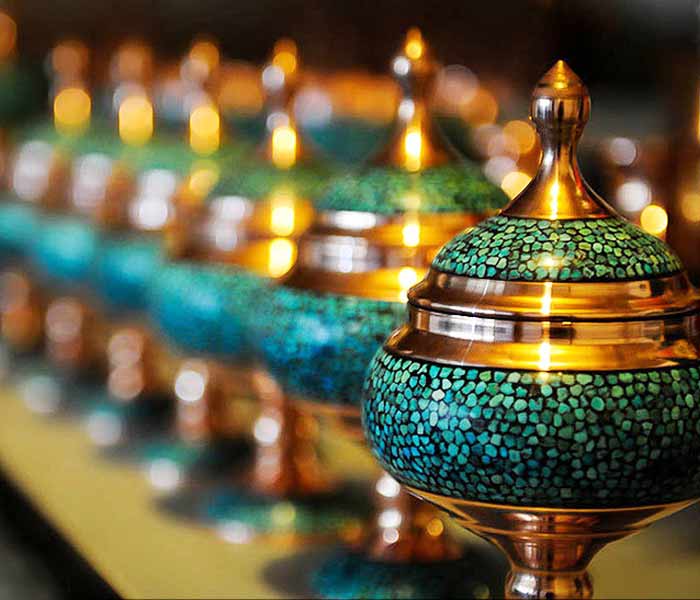
Copperware comes in two colors: red (natural copper) and white (tin-coated). For cooking, beverages, pickles, and other acidic foods that may react with copper, it is essential to use white (tin-coated) copperware. The term “white” refers to the tin layer covering the surface that comes into contact with food.
Excessive copper absorption in the body can cause toxicity, but as long as the tin layer remains intact, there is no risk. For dry foods such as sweets and baked goods, uncoated (red) copperware can be used without concern. To extend the lifespan of copperware and ensure better cooking results, it is recommended to use low to moderate heat during cooking.
4- Mina Kari
Mina Kari (Enamel Work) is one of the most beautiful Iranian handicrafts, with a history dating back 5,000 years. This art form originated in Iran and later spread to other parts of the world.
Mina Kari reached its peak during the Seljuk era, when brass vessels adorned with enamel work became widely popular among the people.
During the Mongol rule, Mina Kari underwent significant transformations, evolving into a new artistic style that introduced intricate designs featuring various shapes and patterns, giving the craft a fresh aesthetic approach.
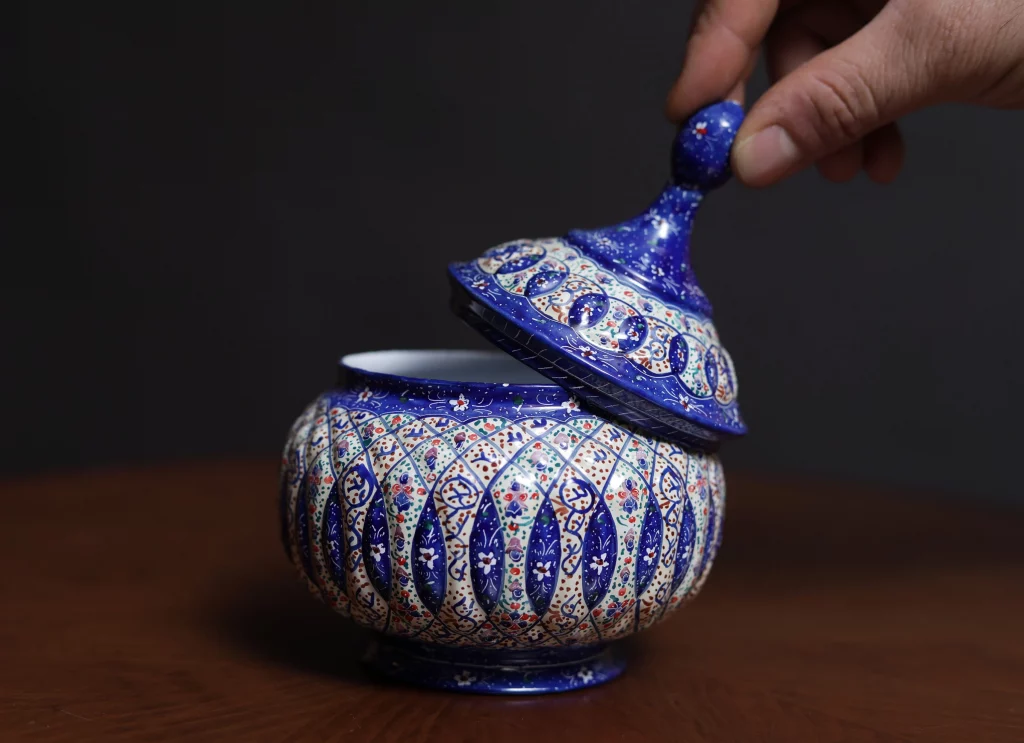
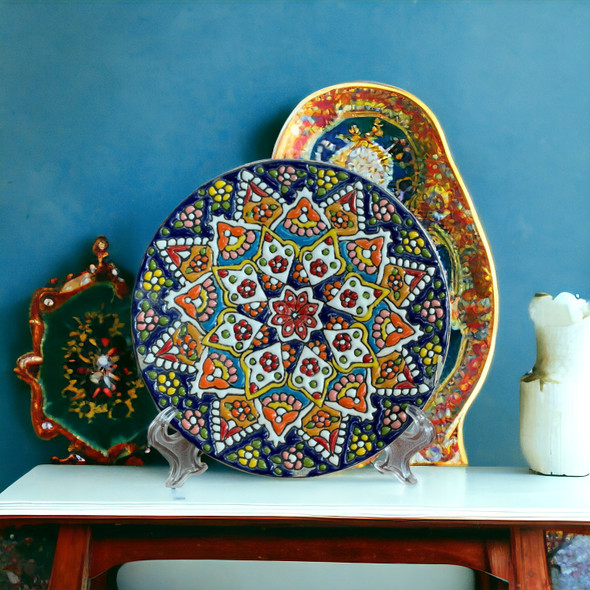
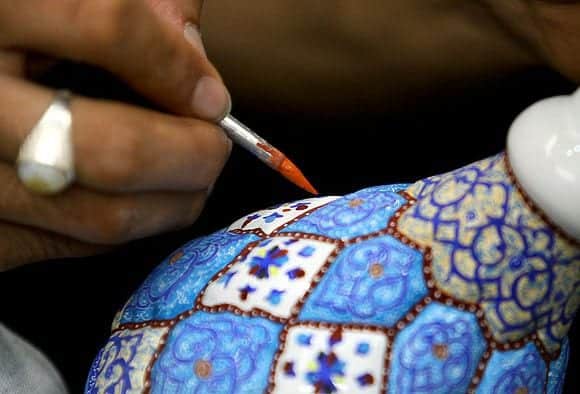
5- Handwoven Persian Carpets and Rugs
The Persian carpet has been renowned worldwide for centuries. Iranians have been pioneers in carpet weaving, transforming Persian carpets into a symbol of art, culture, ingenuity, and authenticity. The history of handwoven Persian carpets dates back to the Sassanian and Achaemenid eras, as well as several centuries before the Common Era. Over time, the variety of designs has expanded, attracting even more admirers of this exquisite craft.
Today, it is difficult to determine which city produces the finest handwoven carpet, but some regions, such as Isfahan, are particularly famous and highly sought after.
From the past to the present, Persian carpets have been woven using two traditional knotting techniques: the Persian (Farsi) knot and the Turkish (Turki) knot.
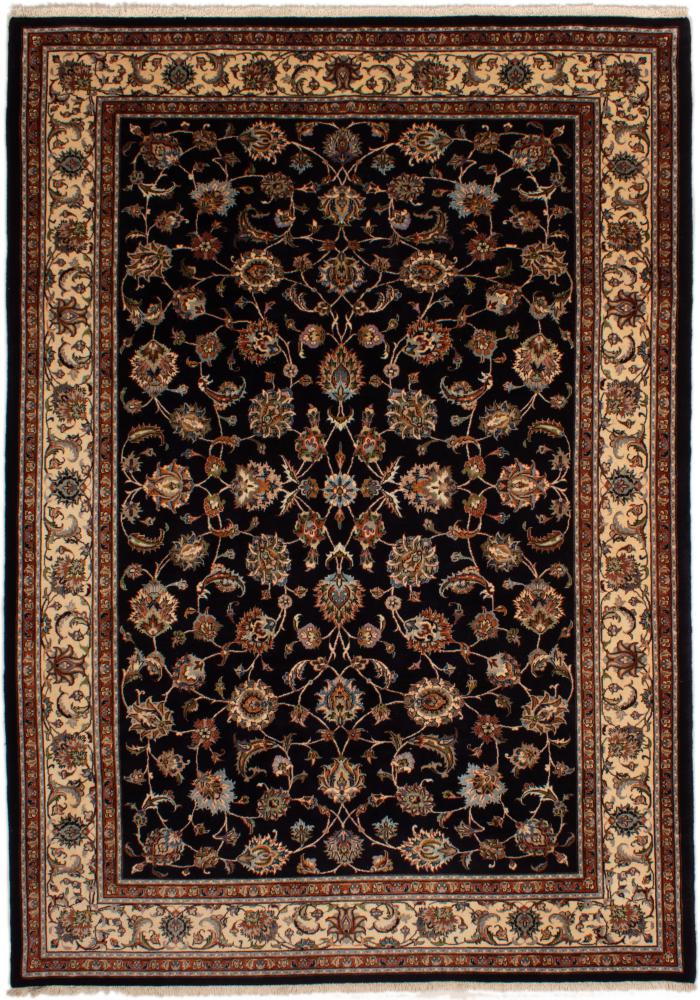
Types of Authentic Persian Carpets
The evolution of handwoven Persian carpets has always followed a progressive path, driven by the artistic talent and creativity of Iranian weavers. As a result, today, we see a wide variety of traditional and authentic Persian carpets, which stand as a distinguished hallmark of Iranian handicrafts. These carpets are highly valued and widely recognized both within Iran and around the world.
The main types of authentic Persian carpets include:
- Gabbeh – A thick, handwoven rug with simple geometric patterns and vibrant colors, known for its softness and warmth.
- Kilim (Gelim) – A flat-woven, lightweight rug featuring bold, colorful patterns, often used as decorative textiles.
- Jajim – A tightly woven, striped textile made from wool or cotton, commonly used for blankets or floor coverings.
Each of these traditional weaves showcases the rich artistic heritage and exceptional craftsmanship of Persian carpet-making.
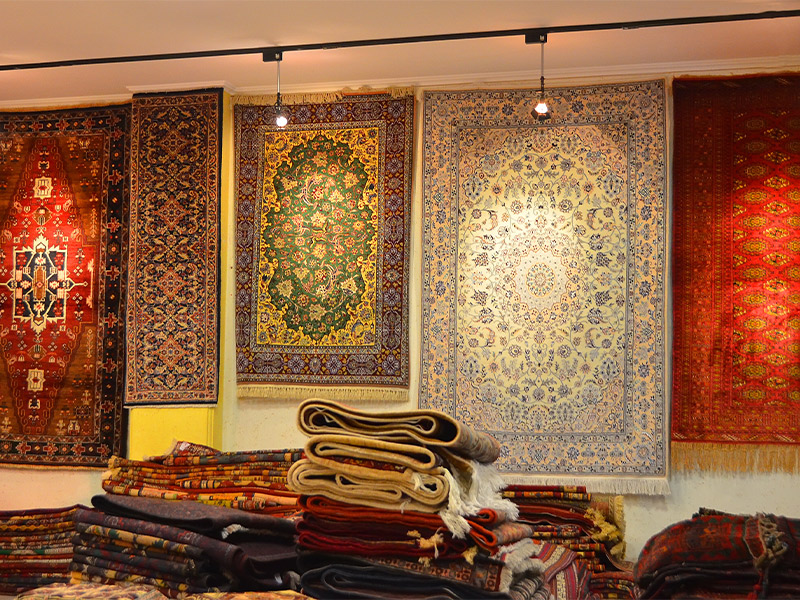
And today, modern Persian carpets are produced with beautiful and unique designs. The most famous ones include:
- Tabriz Carpet
- Kashan Carpet
- Qom Carpet
How to Identify a High-Quality Persian Carpet?
In general, carpets from Tabriz, Qom, Kashan, and northern regions of Iran are among the most popular and sought-after Persian carpets. When choosing and purchasing a Persian carpet, aside from personal preferences, it is essential to consider the following factors to ensure the best selection:
- Pile material (wool, silk, or cotton)
- Number of knots per unit length (density)
- Carpet serial number and warranty
- Dimensions and size
- Carpet texture and softness (pile characteristics)
- The back of the carpet (for assessing knot quality)
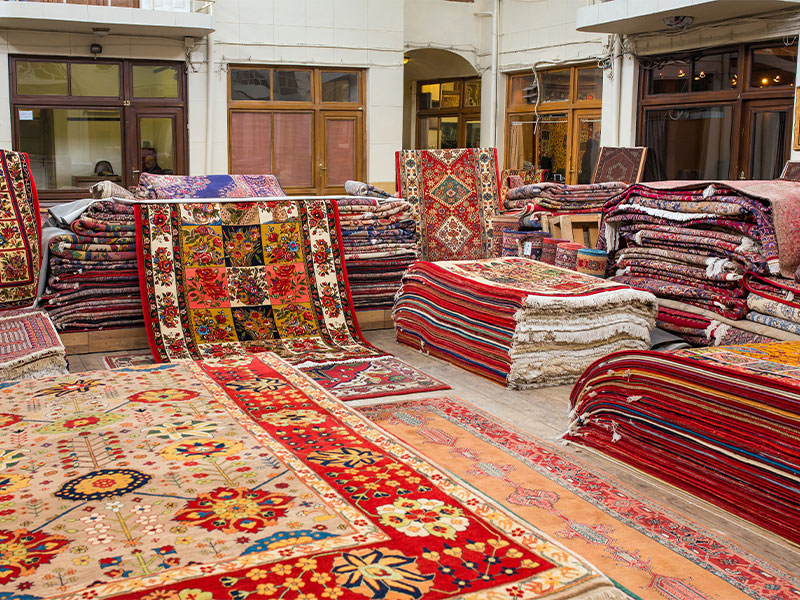
6- Roudouzi-ye Sonnati (Traditional Iranian Embroidery)
Another Iranian handicraft is traditional embroidery (Roudouzi-ye Sonnati), which dates back to the earliest periods of homebuilding and pottery-making—nearly 10,000 years ago! In today’s modern world, traditional embroidery is primarily used for decorative purposes.
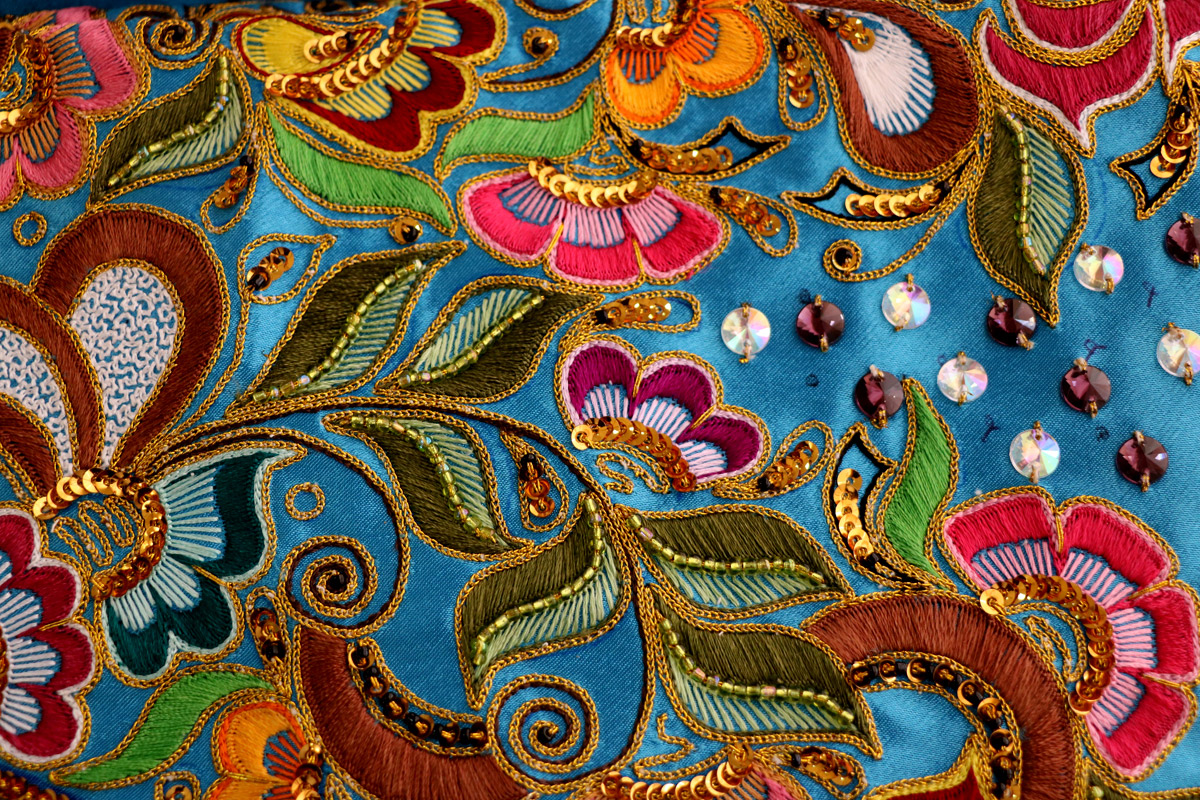
7- Pottery and Ceramics
Pottery vessels are among the oldest creations of humankind. Initially, these containers were used for storing water and food, but as civilizations advanced, decorative patterns and intricate designs began to appear on pottery.
The oldest pottery wheel and kiln in the world were discovered in Susa (Shush), Iran. Additionally, the earliest decorated pottery artifacts are also attributed to Iran.
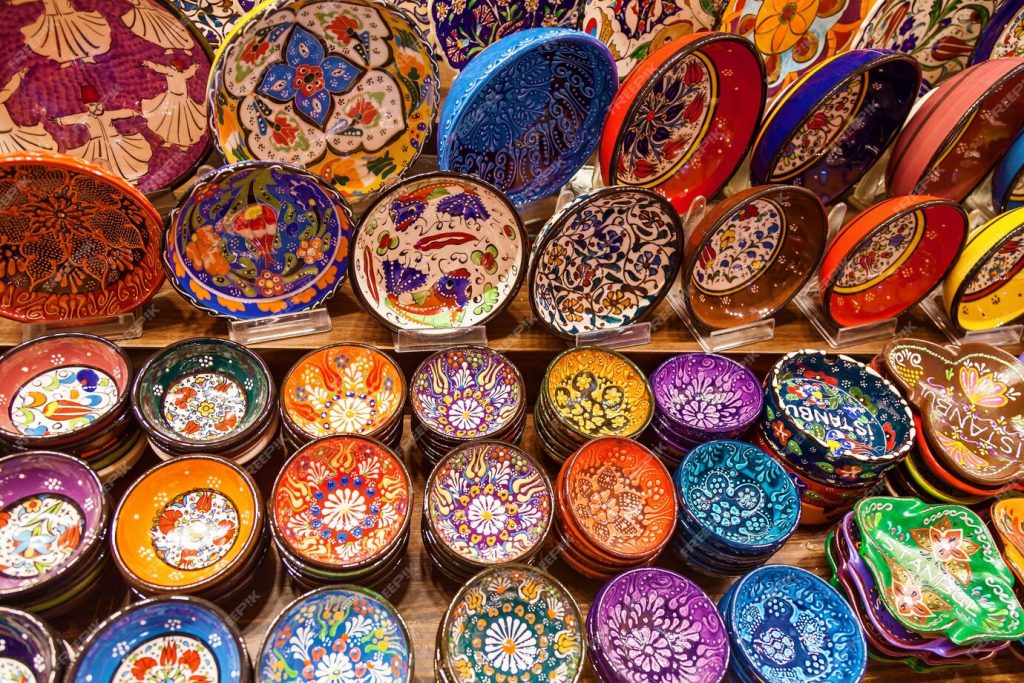
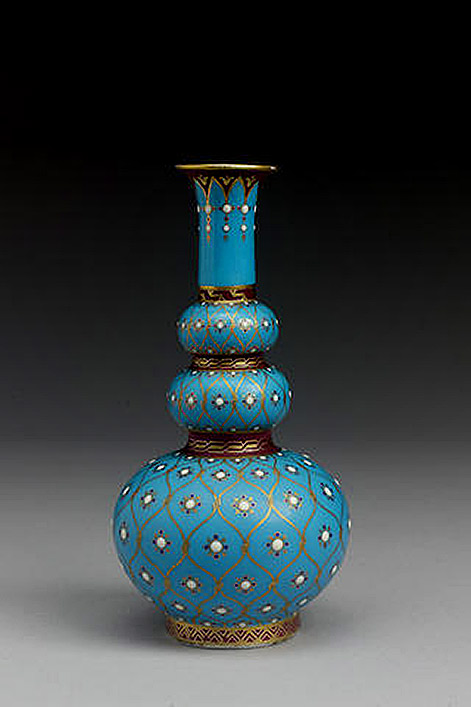
8- Abgineh (Glassware and Persian Glassblowing)
Abgineh is another Iranian handicraft, referring to the art of decorating glass used in various objects. This craft has evolved based on broken and fragmented glass, and it is highly valued by artisans and craftsmen in cities such as Tehran, Isfahan, Meymand, Qamsar, and others.

The art of Abgineh includes various techniques such as molded glassblowing, freehand (blown) glassblowing, triple-layered glass, double-layered glass, glass engraving, acid etching, and matte finishing. Additionally, Iranian artisans have beautifully combined this craft with Mina Kari (enamelwork) and metal handicrafts, creating stunning decorative pieces.
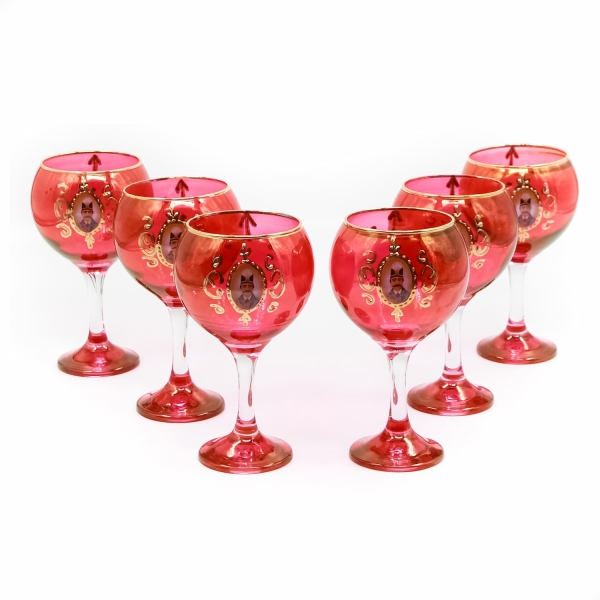
A section of the Museum of Pottery and Glass Handicrafts showcases this exquisite and captivating art form. Some of the handicrafts displayed in the Abgineh Museum date back over 4,000 years, making them truly remarkable artifacts to witness.
9- Khatam Kari(Woodcraft and Persian Wooden Handicrafts) –Persian marquetry
Wooden handicrafts are among the most popular Iranian handicrafts. The decorative process for wooden artifacts is usually carried out after the main structure is built.
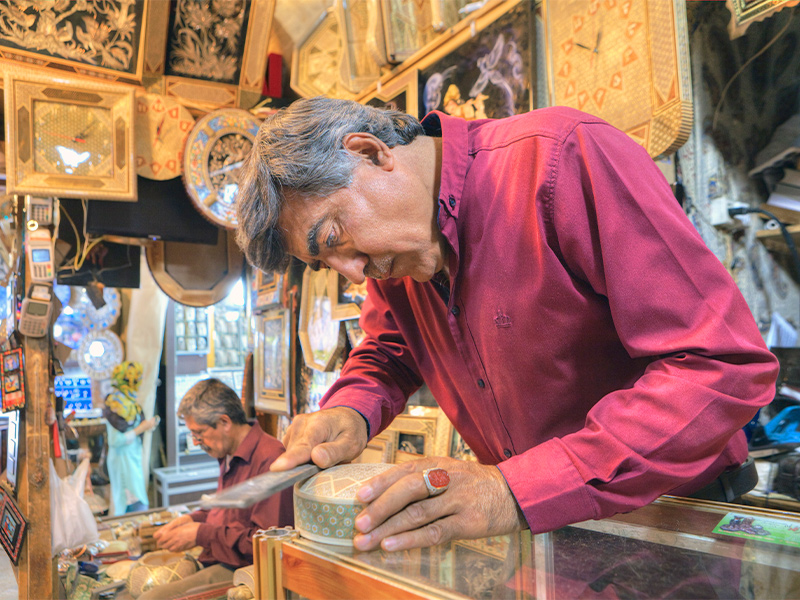
First, the body of the object is crafted using various woodworking and carpentry techniques. Then, the decoration is applied in different artistic methods, either directly onto the surface or as a pre-designed decorative layer that is carefully attached.
Types of Wooden Handicrafts
Wood is the primary material used in wooden handicrafts, and it has held a special place in Iranian art and industry since ancient times. Wooden handicrafts are known for their elegance and delicacy, with various types produced using different techniques, each possessing its own unique beauty.
The shaping and decoration of wood can be achieved through techniques such as carving, cutting, joining, or a combination of these methods.
Types of Wooden Handicrafts
Some of the most well-known wooden art forms include:
- Kharati (Woodturning)
- Monabat Kari (Wood Carving and Engraving)
- Mashbakkari (Latticework and Woodcutting)
- Gereh Chini (Geometric Wood Inlay Work)
- Moarraq Kari (Wood Marquetry/Inlay Work)
- Nazokkari (Fine Woodworking and Veneer Work)
- Khatamkari (Persian Marquetry with Metal and Bone Inlays)
- Moarraq Monabat (A Combination of Wood Inlay and Engraving)
- Moarraq Khatam (A Blend of Marquetryand Persian Inlay Art)
- Wood Sculpting (Figurative Wood Carving and 3D Wooden Art)
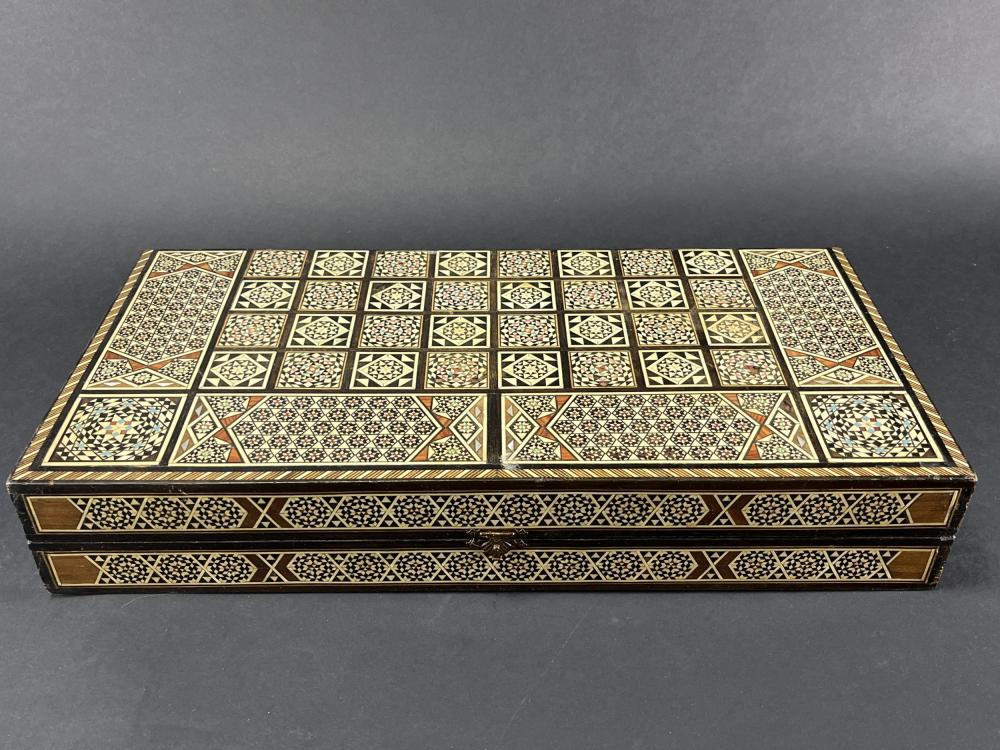
Additionally, wood is widely used in the production of musical instruments, which is also considered an important part of Iranian handicrafts.
10- Negargari(Persian Miniature Painting)
In essence, Negargari (Persian miniature painting) refers to the various styles and techniques of traditional Iranian painting. This art form is deeply intertwined with Persian poetry, literature, and the creativity of the artist, making it one of Iran’s most distinguished handicrafts.
The Negargar (miniature artist) uses fine brushwork and line drawing techniques, creating converging, parallel, or curved lines to manipulate the thickness of the strokes in the painting. Through the repetition of these techniques, the artist achieves shading, depth, and dimensionality in the artwork.

Linework and brushstroke precision are the two fundamental principles of Persian miniature painting.
Persian miniature painting (Negargari) has five unique characteristics:
- Use of fine brush outlines instead of shading and light effects
- A luminous space without a specific light source or perspective angle
- Application of vibrant and flat colors
- Emphasis on surface depiction, avoiding depth and perspective
- Representation of objects from the best possible viewpoint
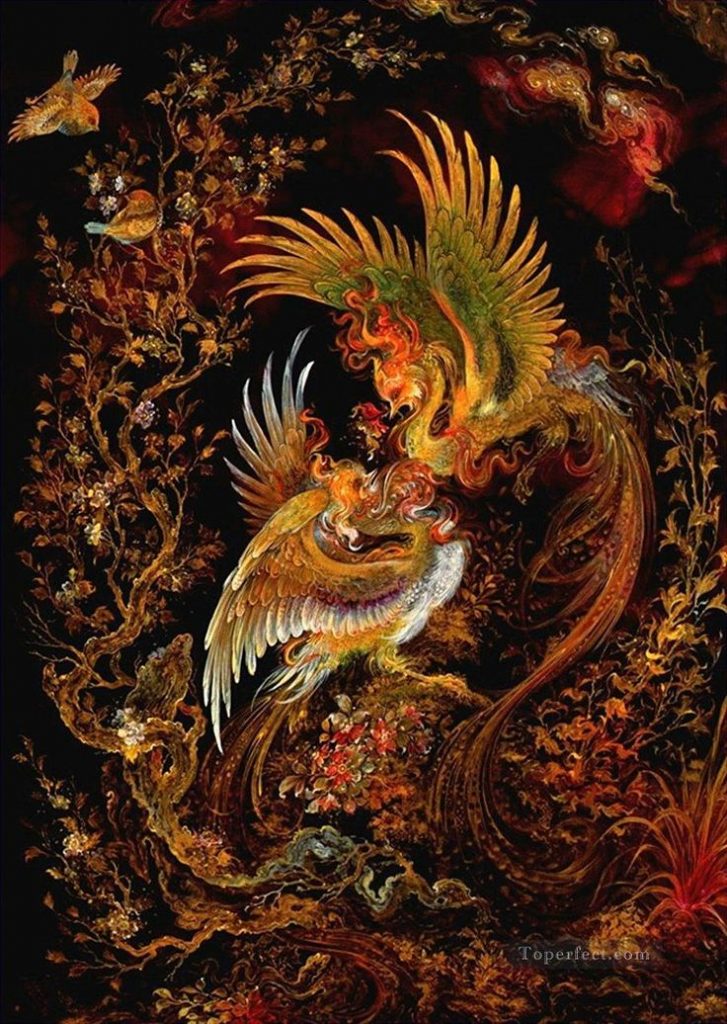
11- Namad Mali(Felt Making)
Felt and the Art of Namad Mali (Felt Making) is a traditional textile craft made from wool. Felt is primarily used as a floor covering, but unlike carpets, it is not woven. Instead, it is created through a process involving pressure, moisture, and heat, which causes the wool fibers to interlock and form a dense, durable fabric.
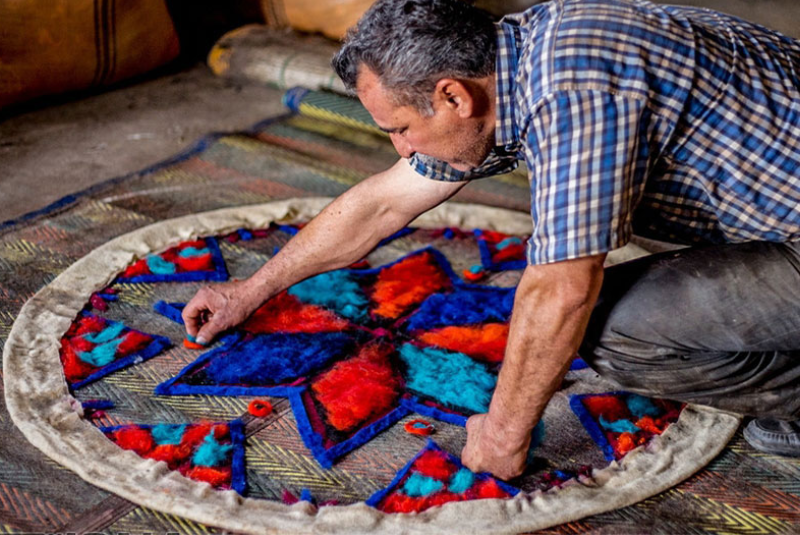
Felt is made from sheep’s wool, utilizing the natural properties of the fibers to bind together. The production of a single piece of felt typically takes one day, and felt makers often work in pairs to complete the process.
Among the various types of Iranian felt handicrafts and products, the most notable include:
Felt floor coverings
Felt hats
Felt coats (Kapnak)
Felt is produced in many cities across Iran. The major production centers include Estahban in Fars province, various cities in Gilan and Mazandaran, Semnan, Damghan, Quchan, Chaharmahal and Bakhtiari, and Kermanshah. It is widely believed that the best and highest-quality felt in Iran is produced in Chaharmahal and Bakhtiari. Due to the exceptional quality, diversity, innovation, and craftsmanship of felt production in this province, Shahr-e Kord was officially recognized as the National City of Felt in July 2015.
12– Leather Handicrafts
Throughout history, humankind has used leather for making clothing, footwear, and even writing on leather sheets. Over time, people have developed various leather handicrafts, transforming it into an artistic and functional craft.Leather remains one of the most popular and widely used Iranian handicrafts, cherished from ancient times to the present day.
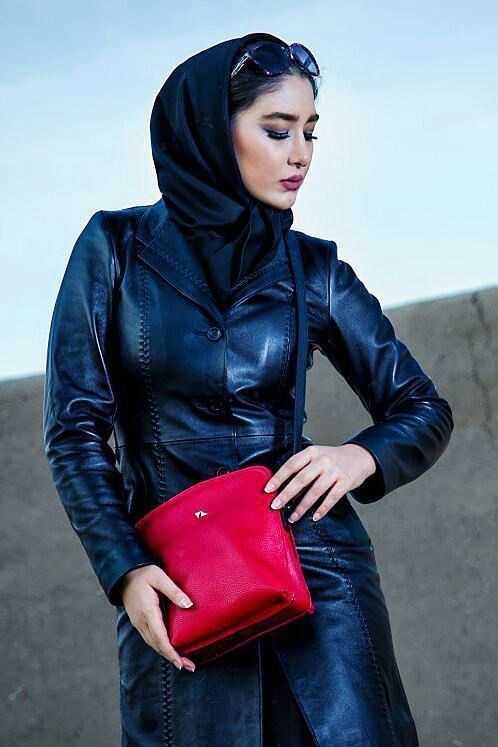
The first industrial leather production factories in Iran were established in the provinces of Tabriz, Mashhad, and Isfahan.
Types of Leather Handicrafts
Leather is a natural, durable, and flexible material, obtained through the tanning of raw animal hides, primarily from cattle. Many provinces in Iran are actively engaged in the leather industry, but Hamadan stands at the forefront of leather production. Following Hamadan, Tabriz, Tehran, East Azerbaijan, Khorasan, Alborz, and Isfahan are among the leading centers for leather craftsmanship.
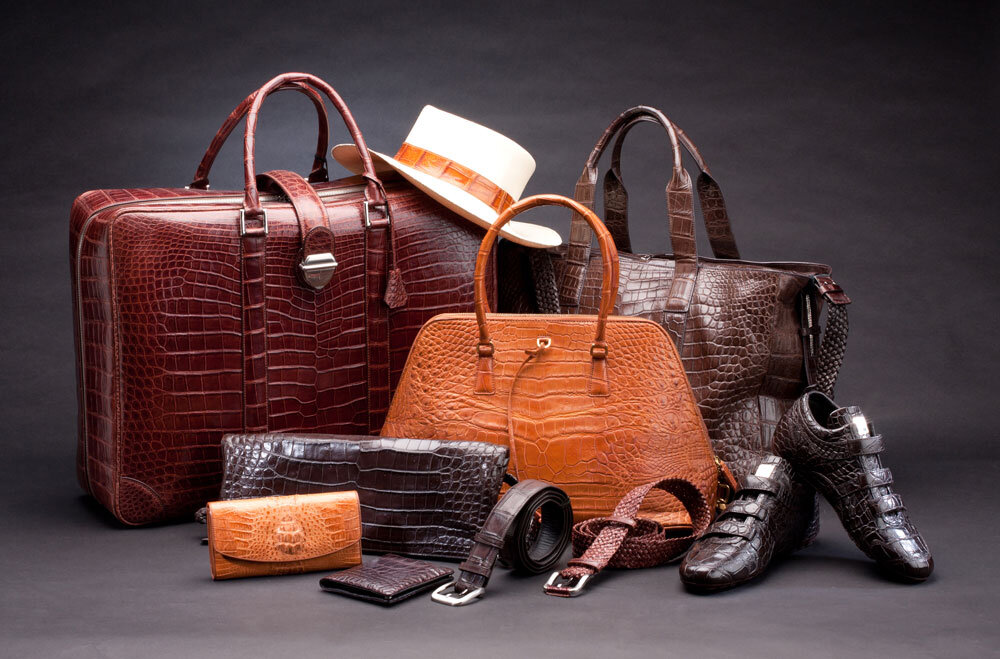
The most important types of Iranian leather handicrafts include:
- Traditional Saddlery (Hand-stitched Leatherwork)
- Leather Bookbinding
- Leather Pyrography (Burnt Leather Art)
- Leather Engraving
- Leather Painting
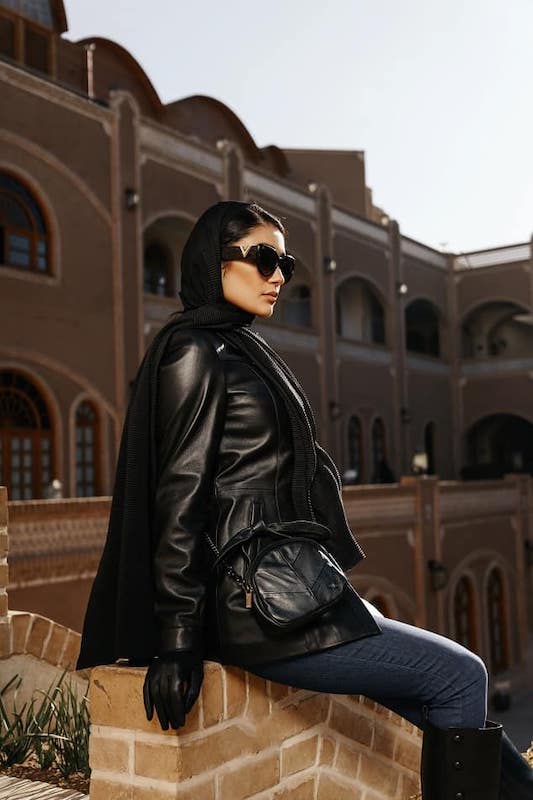

Leave a Reply